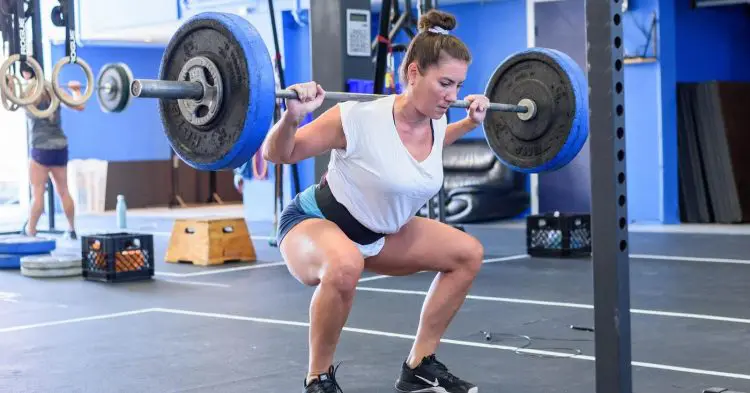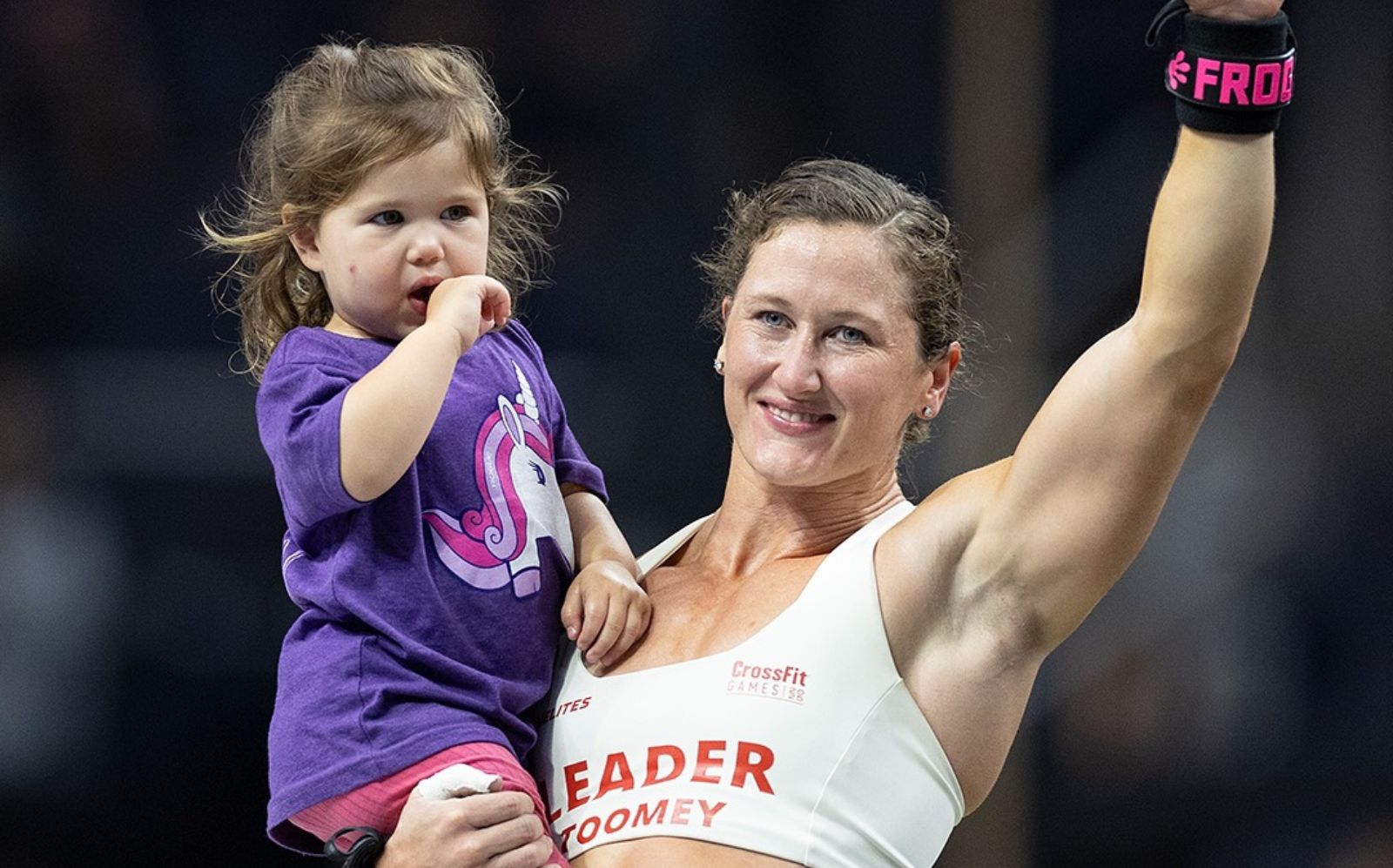What’s the workout?
A new client of mine, and self-self-proclaimed cardio junkie, asked me that the other day after doing five heavy sets of five front squats, supersetted with dumbbell shoulder presses, before hitting a fifteen-minute, every minute on the minute piece of 3-5 strict pull-ups, 5-10 push-ups, and 10-20 hollow rocks.
What do you mean, ‘What’s the workout?’ I asked her.
Well my heart rate didn’t ever get very high. I’m barely breaking a sweat and I feel pretty recovered, she replied.
So you need to feel like you were hit by a bus to feel like you put in a useful workout?
Well, not hit by a bus, but yeah, I need to feel like I worked hard.
Level Up Your Fitness: Join our 💪 strong community in Fitness Volt Newsletter. Get daily inspiration, expert-backed workouts, nutrition tips, the latest in strength sports, and the support you need to reach your goals. Subscribe for free!
…And, coaches everywhere breathe a collective sigh.
The thing about intensity
Have you ever been in an emotionally volatile relationship, filled with ups and downs, but with a serious amount of intensity? So much so that you confuse intensity with love?
News flash: Intensity doesn’t equal intimacy.
What does this have to do with working out?
Many people confuse intensity with effectiveness, but just like the destructive, uber- intense relationship, intensity all the time at the gym can be destructive, especially to your long-term development.
Where did this intensity all the time idea come from?
The rise in popularity of high intensity, HIT workouts—be it CrossFit or Orange Theory—are at least partly to be blamed for the myth that a training session should always make you nauseous to the point of puking, for it to be effective.
This myth couldn’t be further from the truth.
Let’s consider a sports analogy: Think about a sport like football. A football player’s training to competition ratio is probably 15 to one, meaning for every game, they log 15 training sessions.
Seems low, but think about it. A football player might play 16 games all season, yet he trains five days a week, 50 weeks of the year (let’s assume he takes two weeks completely off at some point). This means they do 250 training sessions for every 16 games.
A sport like gymnastics is even more extreme. High-level gymnasts train 30-plus hours a week, and they compete usually less than 10 times in a season.
The point is, it’s important to understand the distinction between game day or test day, and training. This is as true for high-level athletes as it is for gym goers looking to get fit, and especially to stay fit for the long-term.
It’s during training, not during test days or game days, where the gains are made.
If you test yourself everyday, you are:
- More likely to get injured, because you’re never working on technique or fixing weaknesses because you’re always competing.
- Less likely to see results, because you’re not following a well thought out, progressive training program designed for long-term development. You’re simply showing up and hitting it hard (but not smart). In other words, you’re dabbling.

Coach insight: I have worked with dozens of clients in my 11 years of coaching, who want every day to be the hardest workout of their lives, and who stick around after their training session and hit extra conditioning pieces to feel like they got a good workout. These clients don’t stick around. Some might last a couple years, but they eventually burn out or get injured and move on.
Meanwhile, those who understand the distinction between training and testing and have embraced the slower path to long term success, are still with me today. Pretty much across the board.
Also read: 5 Rowing Mistakes You’re Probably Making
A smart training program is: individualized and progressive
1. Individualized
Sorry group fitness lovers, we’re not all created equal. For a training program to be effective, especially in the long term, it needs to take into consideration the individual’s strengths, weaknesses, goals and priorities.
Level Up Your Fitness: Join our 💪 strong community in Fitness Volt Newsletter. Get daily inspiration, expert-backed workouts, nutrition tips, the latest in strength sports, and the support you need to reach your goals. Subscribe for free!
Best case scenario: You work with a coach who puts you through a thorough assessment that looks at how your move, your work capacity, your body composition, your diet, your lifestyle, your priorities and goals.
2. Progressive
Sorry dabblers, you can only make gains showing up to the gym and dabbling with random workouts for so long.
Eventually you’ll plateau, and likely burn out and get injured, if you’re dabbling with random, high-intensity workouts day-after-day.
An effective program should meet you where you’re at—both physically and mentally—and slowly and systematically move you to where you want to go, in a progressive fashion.
Think of it like university: If you jumped into a 400-level course before taking the necessary prerequisites, you would be lost.
So why are you trying to snatch before you can put your hands over your head while keeping a neutral spine without using any weight at all?
Warning: Some days you might not feel like you’re working hard enough because 5 sets of 5 at 60 percent of your three-rep max back squat might feel fairly easy. Other days, intensity will feel non-existent as you’ll be working on, for example, seemingly tedious banded exercises to get your lats more engaged, or drills to help you maintain a hollow body position in a handstand.
If you feel like you’re not doing enough, remember, smart training, not competing, is the secret ingredient to long term results. Just ask any Olympic or professional athlete.
PRO TIP: Figure out what your real goals are and why
Another reason so many people have become dabblers who just want hard workouts is because they don’t even really know why they’re at the gym in the first place.
This comes down to not being in tune with their why, or their true intention.
Sure, people might say they want to lose weight or gain strength, but it ends there.
Sometimes even those superficial goals are misguided, or at the very least, misunderstood: I have worked with clients who, once we dig a little deeper, realize they’re chasing a goal they used to want and no longer care about. Or they’re chasing a goal they think they should want to achieve, but they aren’t willing to do what it takes to achieve it.
As a result, their actions don’t match their goal, and they end up showing up without focus and assume if they crush themselves, they did something useful.
For example, I had a client once tell me her goal was to get her first pull-up, but then she never followed through on the steps required to get the pull-up. Meanwhile, another client told me she wanted to come to the gym five days a week, but she only ever made it once a week and was constantly embarrassed and ashamed when she saw me because she felt like a failure.
Digging a little deeper, turns out the pull-up girl only said she wanted to get a pull-up because she thought that’s what I wanted to hear, and the woman who said she wanted to come five days a week realized that was way too aggressive of a goal for her work and child-raising schedule as a single mom. Adjusting their goals helped them stay more accountable to them and achieve more success.
As I mentioned, figuring out what you truly want out of the gym involves digging a little deeper.
OK, why do you want to lose weight?
When I have gone down this path with clients, when we really investigate into the why, we can finally get somewhere. I have one client breakdown and admit the reason she wanted to lose weight was because her daughter didn’t trust her to babysit her young grand-daughter, because she didn’t think she could keep up with a 3-year-old.
Admitting this to me helped her realize how important this goal of getting healthy really was to her. “I want to be able to take care of my granddaughter” is a much more powerful why, than “I want to lose weight.”
Once you know why you’re at the gym — it’s not just because you want to crush yourself with a hard workout — then you can create alignment in your life that takes into consideration your priorities and goals.
Bottom line: It’s OK if you aren’t committed to getting a pull-up. The key is figuring out what you really want and what you’re willing to do, and then your actions have a much better chance of lining up with what you really want to achieve.
Also read: Three Common Interval Training Mistakes You Might be Making










